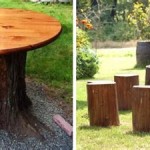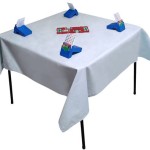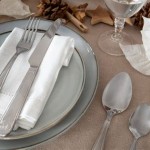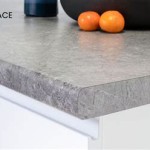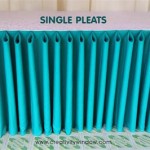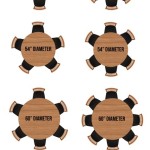What Is The Best Paint to Use On A Wooden Table?
Selecting the appropriate paint for a wooden table is a crucial decision that directly impacts the table's aesthetic appeal, durability, and longevity. The “best” paint is not a universally fixed option, but rather depends on various factors including the intended use of the table, the desired finish, the existing condition of the wood, and the environment in which the table will be situated. Different paint types offer varying levels of protection against wear and tear, moisture, and sunlight exposure. Therefore, a comprehensive understanding of the characteristics of each paint type is paramount to making an informed choice.
Considerations such as the table's primary function (e.g., dining table, coffee table, side table), traffic exposure to which it is subjected, and the overall style of the room are significant determinants. A heavily used dining table, for example, will necessitate a more durable and easily cleanable paint finish than a purely decorative side table. Similarly, a table residing outdoors or in a humid environment will require a different paint formulation than one situated indoors. Exploring the properties of various paint formulations and their suitability for different applications is essential for a successful and long-lasting paint job.
Understanding Different Types of Paint
A wide range of paint types are available for wooden furniture, each offering unique properties and advantages. The most common options include latex paint, oil-based paint, chalk paint, milk paint, and acrylic paint. Each of these paints possesses distinct characteristics that influence their suitability for various types of wooden tables and desired finishing styles. Understanding the nuances of these paint types is key to choosing the best option for a given project.
Latex Paint: Latex paint, also referred to as water-based paint, is a popular choice for many woodworking projects due to its ease of use, low odor, and quick drying time. It is widely available in a variety of colors and sheens, ranging from matte to high-gloss. Latex paint offers good flexibility, which reduces the risk of cracking or peeling, particularly on wood that expands and contracts with changes in temperature and humidity. Furthermore, it is relatively easy to clean up using soap and water. Latex paints have improved significantly in recent years, achieving comparable durability to oil-based paints for many interior applications. However, latex paint may require a primer to ensure proper adhesion to the wooden surface, especially if the table has been previously painted or varnished.
Oil-Based Paint: Oil-based paint is known for its exceptional durability and hard-wearing finish. It provides superior adhesion and creates a smooth, even surface that is highly resistant to scratches, scuffs, and stains. Oil-based paints are particularly well-suited for high-traffic areas or surfaces that are frequently exposed to moisture. However, oil-based paint has a longer drying time compared to latex paint, and it emits strong odors during application. Clean-up requires the use of solvents such as mineral spirits or paint thinner. Due to environmental concerns and stricter regulations regarding volatile organic compounds (VOCs), oil-based paints are becoming less common and may be more difficult to find. Furthermore, oil-based paints tend to yellow over time, especially when exposed to sunlight.
Chalk Paint: Chalk paint is a decorative paint known for its matte finish and ability to adhere to a wide range of surfaces without requiring extensive surface preparation. It is particularly popular for creating a distressed or vintage look on wooden furniture. Chalk paint is easy to apply and can be layered and sanded to achieve various textures and effects. It is typically sealed with wax or varnish to protect the finish and enhance its durability. While chalk paint offers a unique aesthetic, it is generally less durable than latex or oil-based paint and may require more frequent maintenance, especially on high-use tables. It is important to note that "chalkboard paint" is a different product altogether and is designed to create a surface that can be written on with chalk.
Milk Paint: Milk paint is an environmentally friendly option made from natural ingredients such as milk protein (casein), lime, and pigments. It provides a unique, slightly translucent finish that can be easily distressed or antiqued. Milk paint is available in powder form and must be mixed with water before application. It is highly breathable and allows moisture to escape from the wood, making it a good choice for antique furniture or surfaces that are prone to moisture damage. However, milk paint can be less predictable than other types of paint and may require some experimentation to achieve the desired results. It also typically requires a sealant to protect the finish and make it more durable.
Acrylic Paint: Acrylic paint is a versatile option that offers a good balance of durability, ease of use, and affordability. It is available in a wide range of colors and finishes, and it can be applied to various surfaces, including wood. Acrylic paint dries quickly and is relatively easy to clean up with soap and water. It is also resistant to fading and cracking, making it a good choice for both indoor and outdoor applications. While acrylic paint may not be as durable as oil-based paint, it is a suitable option for many wooden table projects, especially when used in conjunction with a primer and topcoat.
Preparation Is Key: A Step-by-Step Guide
Successful painting of a wooden table heavily relies on proper preparation. This ensures optimal paint adhesion, a smooth finish, and ultimately, the longevity of the paint job. Neglecting preparation can lead to peeling, cracking, or an uneven finish, regardless of the quality of the paint used. The following steps outline a comprehensive preparation process.
Cleaning: The first step in preparing a wooden table for painting is thorough cleaning. This removes dirt, grease, wax, and other contaminants that can interfere with paint adhesion. Use a mild detergent and warm water to wash the surface, then rinse it thoroughly with clean water. For stubborn stains or grease, a stronger cleaner such as trisodium phosphate (TSP) may be necessary. Always follow the manufacturer's instructions when using any cleaning product, and wear appropriate safety gear, such as gloves and eye protection. Allow the table to dry completely before proceeding to the next step.
Sanding: Sanding is crucial for creating a smooth, even surface and for removing any existing finish, such as varnish or paint. Start with a coarser grit sandpaper (e.g., 80-120 grit) to remove any imperfections or rough spots. Then, gradually move to finer grits (e.g., 180-220 grit) to smooth the surface. Sand in the direction of the wood grain to avoid scratching the surface. If the table has been previously painted, use a scraper or paint stripper to remove loose or peeling paint before sanding. After sanding, thoroughly remove all sanding dust with a vacuum cleaner and a tack cloth.
Repairing Damage: Before painting, repair any cracks, dents, or holes in the wood. Use wood filler or epoxy putty to fill these imperfections, following the manufacturer's instructions. Allow the filler to dry completely, then sand it smooth with the surrounding wood. For larger repairs, it may be necessary to use wood patches or veneers. Ensure that the repaired areas are flush with the rest of the surface and that they are properly sanded and prepared for painting.
Priming: Primer is an essential step in most painting projects, especially when working with wood. Primer creates a smooth, uniform surface for the paint to adhere to, and it helps to block stains and prevent bleed-through. Choose a primer that is compatible with the type of paint you will be using. Apply a thin, even coat of primer using a brush, roller, or spray gun. Allow the primer to dry completely before applying the paint. If the table is made of knotty wood, use a stain-blocking primer to prevent the knots from bleeding through the paint.
Masking: Use painter's tape to mask off any areas that you do not want to paint, such as edges, trim, or hardware. This will help to create clean, sharp lines and prevent paint from getting on unwanted surfaces. Ensure that the tape is properly adhered to the surface to prevent paint from seeping underneath. Remove the tape immediately after painting, while the paint is still wet, to avoid peeling or chipping the paint.
Application Techniques and Finishing Touches
The application of paint and subsequent finishing touches are critical in determining the final appearance and durability of the painted wooden table. Proper application techniques ensure a uniform coat, minimize brush strokes, and prevent drips or runs. Similarly, the choice of sealant or topcoat affects the level of protection against wear, moisture, and stains.
Applying the Paint: Apply the paint in thin, even coats, using a high-quality brush, roller, or spray gun. Follow the manufacturer's instructions regarding drying time and recoating. Avoid applying too much paint at once, as this can lead to drips or runs. If using a brush, use smooth, even strokes in the direction of the wood grain. If using a roller, use a low-nap roller to minimize texture. For spray painting, hold the spray gun at a consistent distance from the surface and use overlapping strokes to ensure even coverage. Allow each coat of paint to dry completely before applying the next coat.
Sanding Between Coats: Sanding lightly between coats of paint can help to create a smoother, more even finish. Use a fine-grit sandpaper (e.g., 220-320 grit) to lightly sand the surface after each coat of paint has dried. This will remove any imperfections or brushstrokes and help the next coat of paint adhere better. Be sure to remove all sanding dust before applying the next coat of paint.
Sealing and Protecting: Once the paint has dried completely, apply a sealant or topcoat to protect the finish and enhance its durability. Sealants and topcoats are available in various sheens, ranging from matte to high-gloss. Choose a sealant that is compatible with the type of paint you have used. Apply the sealant in thin, even coats, following the manufacturer's instructions. Allow each coat to dry completely before applying the next coat. Common sealants include polyurethane, varnish, and wax. Polyurethane is a popular choice for its durability and resistance to moisture and scratches. Varnish provides a similar level of protection and is available in various formulations, including water-based and oil-based. Wax is a more traditional option that provides a soft, matte finish. It requires more frequent maintenance than polyurethane or varnish but can be easily reapplied as needed.
Curing Time: Allow the painted table to cure completely before using it. Curing time can vary depending on the type of paint and sealant used, but it typically takes several days or even weeks for the finish to fully harden. During the curing process, avoid placing heavy objects on the table or exposing it to extreme temperatures or humidity. Following the manufacturer's recommendations for curing time will ensure that the finish is as durable and long-lasting as possible.
Ultimately, the best paint for a wooden table is the one that best meets the specific needs and requirements of the project, taking into account factors such as durability, aesthetics, ease of use, and environmental considerations. A careful assessment of these factors, combined with proper preparation and application techniques, will result in a beautifully painted and long-lasting wooden table.

The Best Way To Paint A Dining Table And Chairs Confessions Of Serial Do It Yourselfer

How To Paint A Table Diy Black Painted Furniture Tea And Forget Me Nots

How To Paint A Table With The Best Black Furniture And Stain

The Best Dining Room Paint Color

The Best Way To Paint A Dining Table And Chairs Confessions Of Serial Do It Yourselfer

Repainting Furniture How To Paint Over Stained Wood

The Best Dining Room Paint Color

How To Paint A Table With The Best Black Furniture And Stain

The Best Way To Paint A Dining Table And Chairs Confessions Of Serial Do It Yourselfer

7 Easy Steps To Paint Wooden Furniture Perfect Results Every Time

